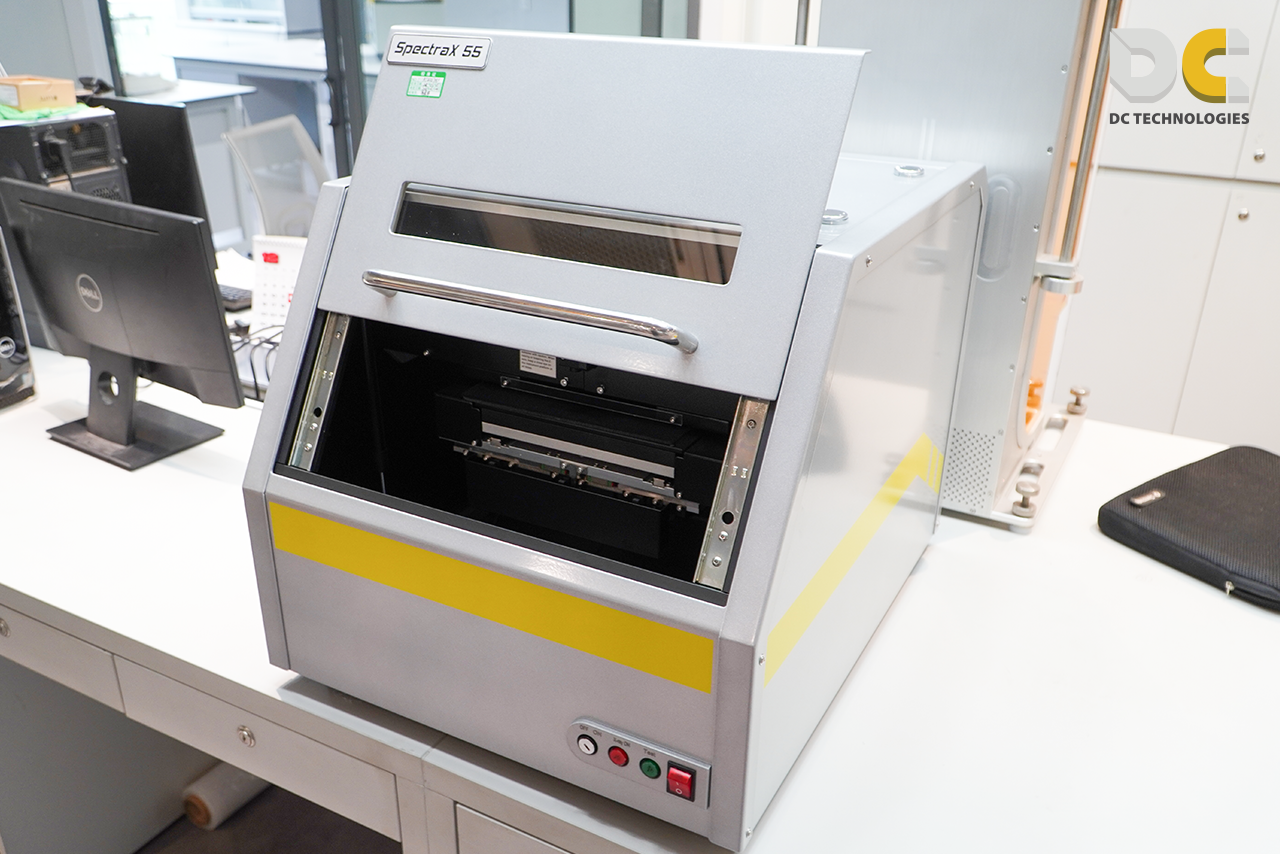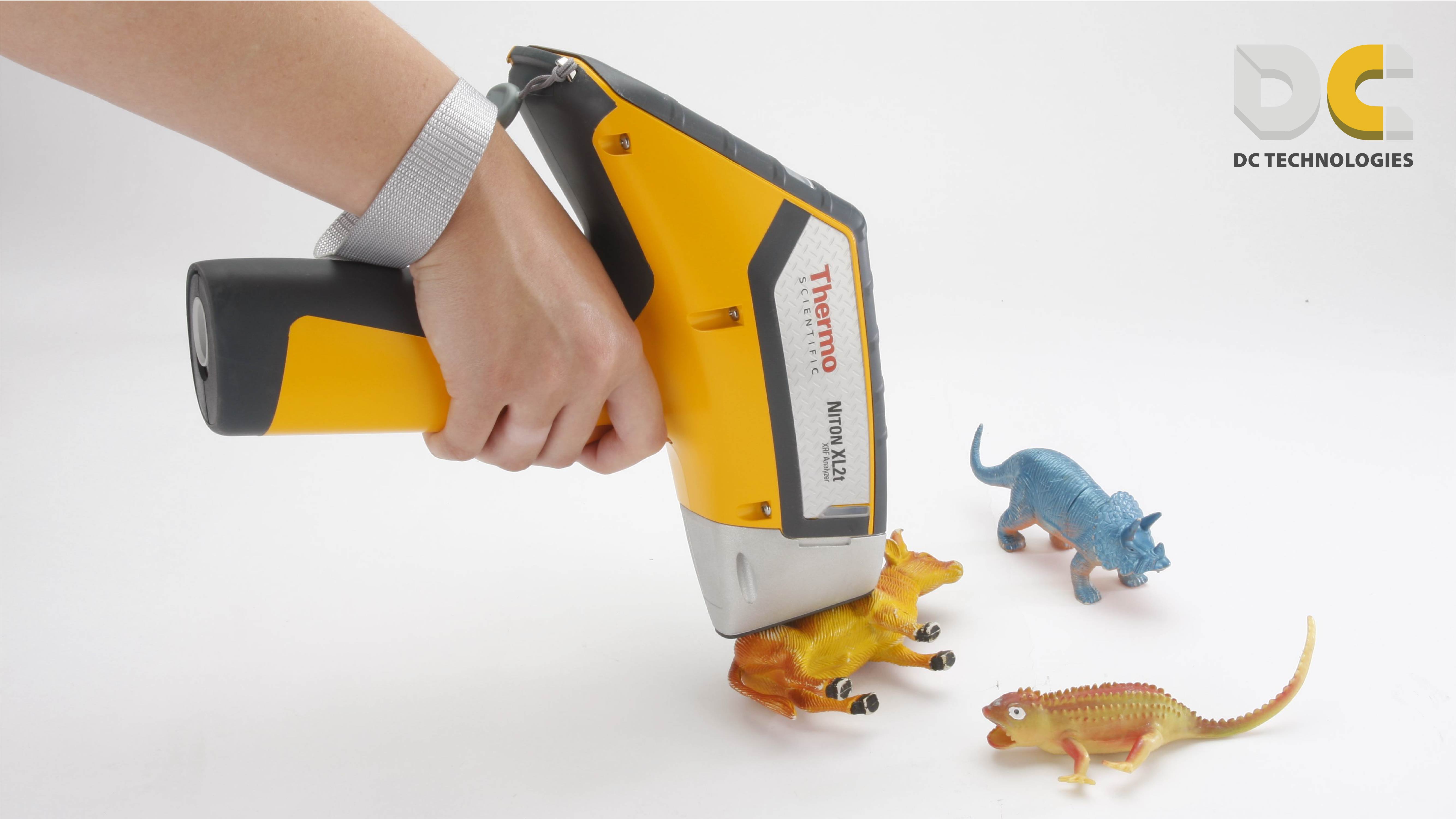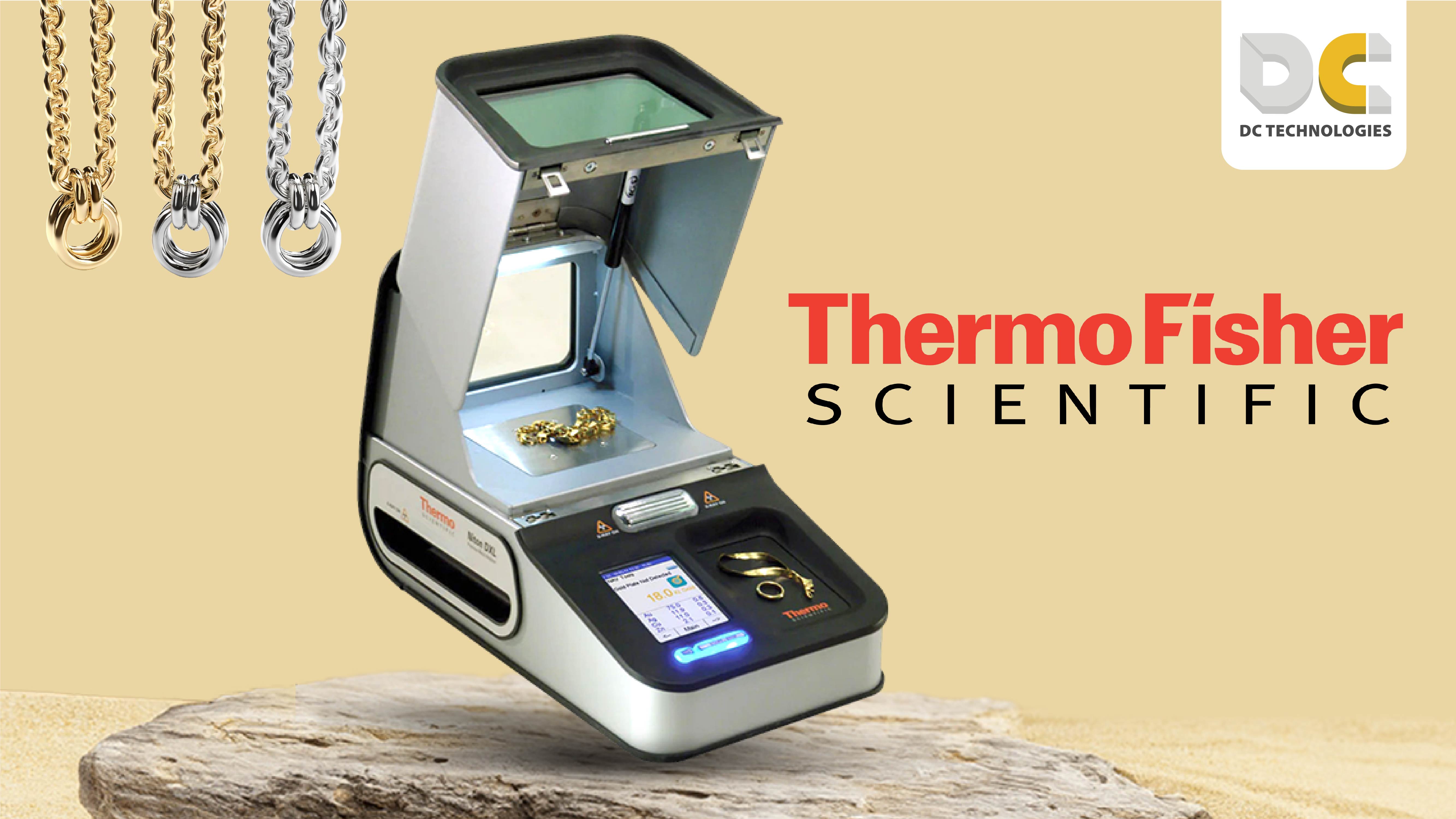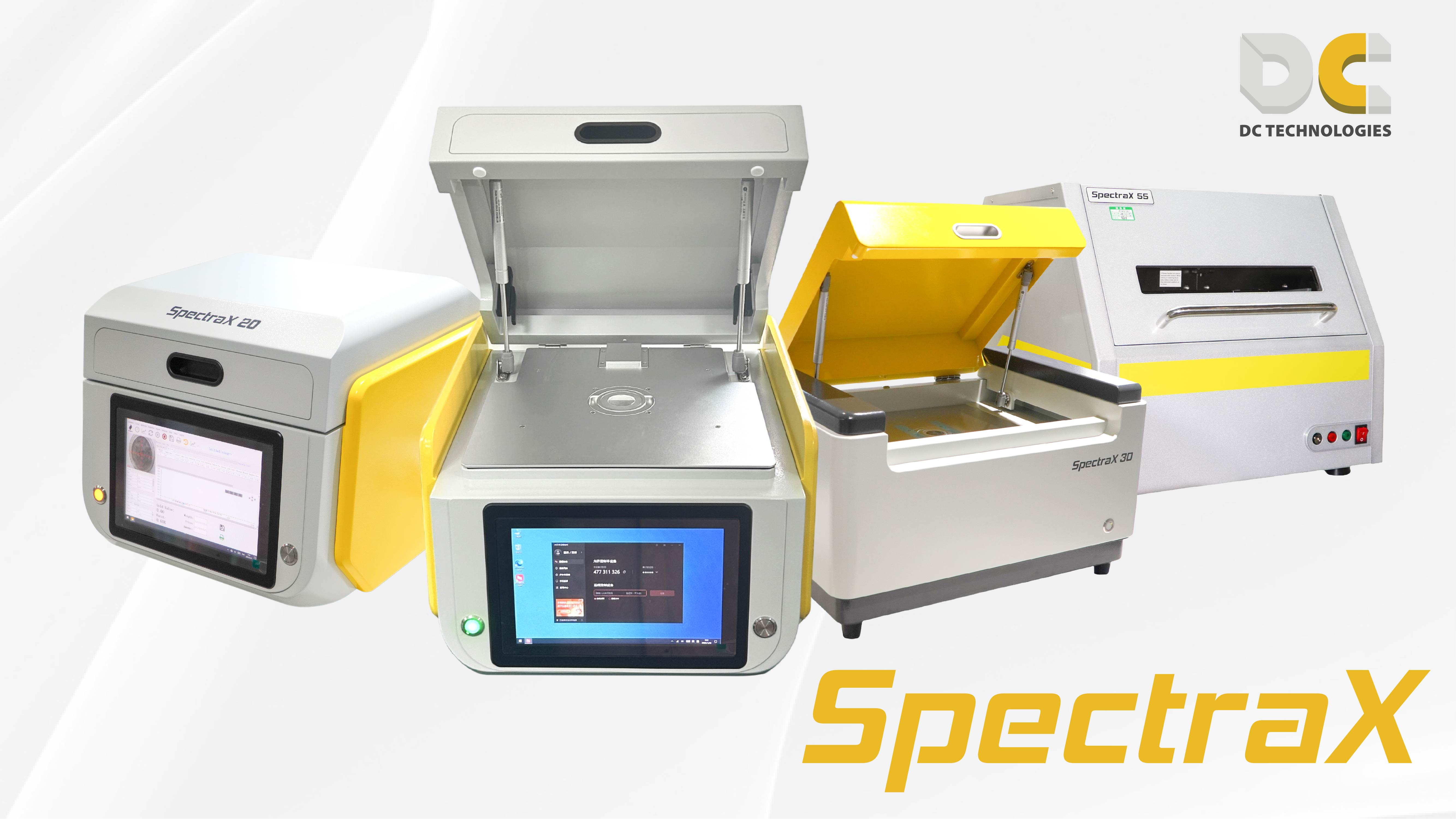Chia sẻ kinh nghiệm
What is an XRF Spectrometer? Differences Between XRF Spectrometers and Handheld XRF Devices
In the world of science and technology, material analysis devices play a crucial role. XRF (X-Ray Fluorescence) analyzers are among the most popular tools for determining material composition. There are two main types of XRF devices: benchtop XRF spectrometers and handheld XRF devices. Each type has its own advantages and applications, tailored to specific needs. In this article, we will explore in detail what a benchtop XRF spectrometer is, how it works, its applications, and compare it with handheld XRF devices.
1. XRF Spectrometer

1.1 What is a Benchtop XRF Spectrometer?
A benchtop XRF spectrometer, also known as a benchtop XRF analyzer, is a material analysis device that uses X-ray fluorescence technology to determine the chemical composition of materials. This device is typically used in laboratories, research facilities, or industries that require high precision in analyzing the elemental composition of materials.
A benchtop XRF analyzer operates on the principle that when a material is exposed to X-rays, the atoms in the material will emit fluorescent radiation. By analyzing this emitted radiation, the device can identify the chemical elements present in the sample and their concentrations.
1.2 Structure of a Benchtop XRF Spectrometer
A benchtop XRF spectrometer consists of the following main components:
X-ray Source (X-ray Tube): Emits X-rays to excite the atoms in the sample, causing X-ray fluorescence.
Spectrometer: Collects and analyzes the X-rays emitted from the sample and identifies the elements present.
Controller: Manages the device's operations and collects and processes data.
Display Screen and Analysis Software: Allows users to view analysis results and perform necessary tasks.
1.3 Advantages of a Benchtop XRF Spectrometer
Benchtop XRF spectrometers offer several notable advantages, making them ideal for material analysis:
High Accuracy: Benchtop XRF spectrometers provide highly accurate results, with minimal variation between measurements.
Non-destructive Analysis: The device does not damage the sample, which is critical when analyzing valuable or irreplaceable materials.
Ease of Use: With supporting software, the device is easy to use, even for beginners. Analysis results can be displayed directly on a computer or tablet connected to the machine.
Fast Analysis: Benchtop XRF spectrometers provide immediate results, saving time and improving work efficiency.
1.4 Applications of Benchtop XRF Spectrometers
Benchtop XRF spectrometers are widely used across various fields due to their accurate and fast analysis capabilities. Common applications include:
Metal and Alloy Analysis: Benchtop XRF spectrometers are often used to check the composition of metals, especially in industries like steel, aluminum, copper, and other alloys. The device's accuracy helps detect impurities and accurately determine the elemental ratios in materials.
Jewelry Industry: XRF spectrometers are useful tools for determining the composition of gold, silver, and other precious metals in jewelry manufacturing. This ensures manufacturers and jewelers can check product quality and verify the accuracy of precious metal ratios.
Material Research: Benchtop XRF spectrometers are also used in material research laboratories, such as testing construction materials, analyzing minerals, or researching new materials in high-tech industries.
Product Quality Control: XRF devices are used in manufacturing to check the quality of raw materials and finished products, ensuring that items meet the required chemical composition standards.
2. What is a Handheld XRF Device?

A handheld XRF device is a portable chemical analysis tool used to check the elemental composition of samples without needing to bring the sample to a laboratory. It uses X-rays to detect and analyze elements in the sample and can conduct analyses directly in the field.
Handheld XRF devices are commonly used in industries such as mining, metal testing, construction materials, and even food and environmental testing. Their main advantage is portability and ease of use.
3. Comparing Benchtop XRF Spectrometers and Handheld XRF Devices

Below is a detailed comparison of benchtop XRF spectrometers and handheld XRF devices to help you better understand the differences between the two:
3.1 Purpose
Benchtop XRF Spectrometer: Primarily used in laboratories, research facilities, and industries requiring high precision and a stable working environment. It is commonly used to analyze materials such as metals, alloys, minerals, or jewelry manufacturing materials.
Handheld XRF Device: Typically used in fields, mining sites, and situations where mobility is required. This device is used for quick analysis of ores, metals, and other materials directly on-site.
3.2 Size
Benchtop XRF Spectrometer: Larger in size, usually designed as a fixed device on a workbench. It requires a larger workspace and is less portable.
Handheld XRF Device: Compact and portable, easy to carry and move around, making it suitable for outdoor work or in places where fixed devices cannot be used.
3.3 Applications
Benchtop XRF Spectrometer: Commonly used in applications requiring high precision, such as analyzing precious metals, alloy composition, material research, or laboratory sample analysis.
Handheld XRF Device: Due to its portability, handheld devices are widely used in industries such as mining, industrial maintenance, and on-site quality checks.
3.4 Cost
Benchtop XRF spectrometers have a higher initial investment cost compared to handheld XRF devices. However, for those requiring high precision and diverse sample analysis, benchtop XRF is a worthwhile investment. Handheld XRF devices are more affordable and are better suited for simpler testing tasks.
4. Best Benchtop XRF Spectrometers
When choosing a benchtop XRF spectrometer, it is essential to look for one with high accuracy, stable performance, and ease of use. Here are some of the top-rated benchtop XRF spectrometers available today:
4.1 DXL 800 Gold Analyzer - Thermo Fisher Scientific

The DXL 800 from Thermo Fisher Scientific is one of the leading benchtop XRF models. It stands out for its ability to quickly and accurately analyze metals and alloys. The DXL 800 uses advanced technology to provide precise results, making it ideal for laboratory use, metal manufacturing industries, and quality control of raw materials and finished products. The device is user-friendly and helps save time while optimizing the analysis process.
4.2 SpectraX Series

The SpectraX series from Spectro Analytical Instruments is another excellent choice for those needing fast and accurate material analysis. The SpectraX line includes models such as SpectraX 20, SpectraX 25, SpectraX 30, and SpectraX 55, each suited for different requirements in terms of resolution and sample handling capabilities. SpectraX is known for its advanced technology, providing high resolution and the ability to analyze multiple elements simultaneously. It is well-suited for applications in metal industries, mineral research, and material analysis.
All the benchtop XRF spectrometers mentioned above are praised for their accuracy, versatility, and wide range of applications across various industries. When choosing an XRF device, you should consider your specific needs to select the most suitable product, improving work efficiency and ensuring high-quality analysis.
5. DC Technologies - A Trusted XRF Distributor in Vietnam
If you're looking for a reputable supplier of XRF devices in Vietnam, DC Technologies is one of the leading companies that distributes XRF analyzers from top brands like Thermo Fisher Scientific and SpectraX. With a team of professional technicians and excellent after-sales services, DC Technologies is committed to providing customers with the best quality XRF products that meet the analytical needs of various industries and research fields.
This article provides detailed information about benchtop XRF spectrometers, the differences between benchtop XRF and handheld XRF devices, and the top XRF products available today. We hope this article helps you better understand the different types of XRF devices and choose the one that best suits your needs. If you have any questions or need advice, feel free to contact DC Technologies!
